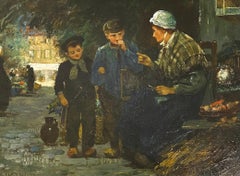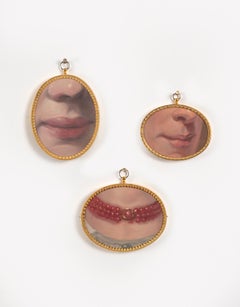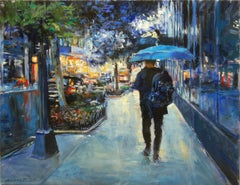Flora MacDonald Reid Figurative Paintings
Early 20th Century Flora MacDonald Reid Figurative Paintings
Oil
2010s Contemporary Flora MacDonald Reid Figurative Paintings
Linen, Oil
Artist Comments
A person walks down a rainy Manhattan street under a blue umbrella. Glowing storefronts line the sidewalk, adding warmth to the cool, wet surroundings. Inspir...
21st Century and Contemporary Impressionist Flora MacDonald Reid Figurative Paintings
Oil
1920s Tonalist Flora MacDonald Reid Figurative Paintings
Glue, Mixed Media, Oil, Acrylic
1950s Flora MacDonald Reid Figurative Paintings
Oil
2010s Tonalist Flora MacDonald Reid Figurative Paintings
Glue, Mixed Media, Oil, Spray Paint, Acrylic, Paper
1950s Flora MacDonald Reid Figurative Paintings
Oil
Artist Comments
Under the glow of a lamp, a venerable professor attentively reads and evaluates student submissions. The composition is one of artist Onelio Marrero's many port...
21st Century and Contemporary Impressionist Flora MacDonald Reid Figurative Paintings
Oil
Artist Comments
Artist Onelio Marrero often spends time with his family at the New Jersey shore. In this painting, groups of children strategize and work diligently digging f...
21st Century and Contemporary Impressionist Flora MacDonald Reid Figurative Paintings
Oil
Artist Comments
Friends catch up on current events in the lively atmosphere of a tapas night in Seville, Spain. The warm tones capture the coziness of the scene. Loose, impre...
21st Century and Contemporary Impressionist Flora MacDonald Reid Figurative Paintings
Oil
Artist Comments
This painting puts the viewer inside one of the main hallways at the Louvre Museum in Paris. The depth draws attention from one figu...
21st Century and Contemporary Impressionist Flora MacDonald Reid Figurative Paintings
Oil
Artist Comments
A woman contemplates in front of Rene Magritte's Lovers at the Museum of Modern Art in New York City. The warm, muted tones of the wall and the soft light giv...
21st Century and Contemporary Impressionist Flora MacDonald Reid Figurative Paintings
Oil
Artist Comments
A child in a red-and-white striped shirt sleeps peacefully among vibrant yellow sunflowers. Their face merges effortlessly with the petals, creating a dreamlike...
21st Century and Contemporary Surrealist Flora MacDonald Reid Figurative Paintings
Oil


